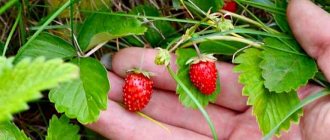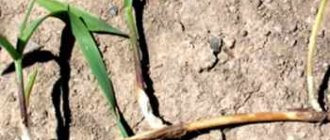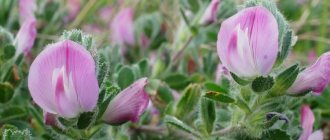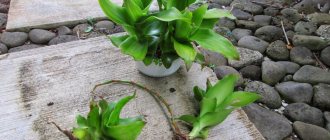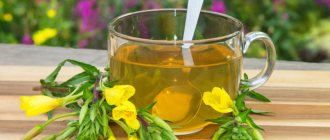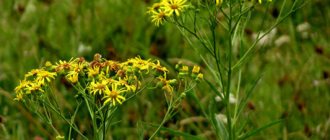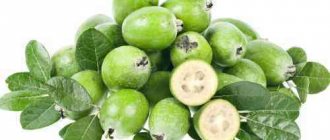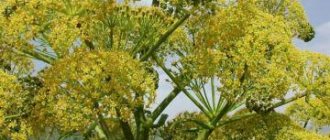Chemical composition
For the preparation of medicines, traditional medicine uses one of the species - wild rosemary. The chemical composition of wild rosemary contains essential oils containing sabinene, thymol, ledol, myrtenal, palustrol, bornyl acetate, cymene, geranyl acetate, myrcene, pinenes, tricyclene, camphene, tricyclene.
Most of the ice is formed in the essential oil obtained from the leaves of a young bush during flowering. It must be remembered that an overdose of ice can cause breathing problems and cardiac arrest. However, if the norm is observed, wild rosemary stimulates the work of the heart muscle, activates the pulse and heartbeat.
In addition, flavonoids were identified in the leaves of wild rosemary - hyperin, quercetin, kaempferol. Tannins, arbutin, coumarins, resins, vitamin C, formic and valeric acids, sesquiterpene alcohols, macro- and microelements, andromedotoxin - the last substance determines the toxic qualities of wild rosemary.
Due to the presence of toxic substances, treatment with wild rosemary should be carried out under the supervision of a doctor, overdose should be avoided, and the drug should be abandoned if unpleasant symptoms appear.
Ledum, application
use of wild rosemary
Wild rosemary has bactericidal, anti-inflammatory and expectorant effects. In folk medicine, infusions, tinctures, decoctions, oil extracts and ointments are made from it.
Properties, use of wild rosemary. Decoctions, tinctures, ointments, oil extracts are used externally for gout, arthritis, neuralgia, radiculitis, bruises (as a pain reliever). A decoction of wild rosemary and an infusion of wild rosemary are also used in the form of lotions, as a wound-healing and hemostatic agent for frostbite.
And also, a decoction of wild rosemary is used for diathesis, scrofula and as a sleeping pill. Baths are made from the decoction, used for douching, for trichomonas, or microenemas for worms.
Medicinal properties
Preparations from wild rosemary have long been used in folk medicine; they are used both externally and internally. Ledum has an expectorant, antipyretic, diaphoretic, bactericidal, anticonvulsant, and antispasmodic effect.
In pharmacology, the drug “Ledin” was created based on wild rosemary, which is prescribed only to adults for severe dry cough caused by bronchitis or pneumonia.
Preparations from wild rosemary not only remove mucus from the lungs and bronchi, they suppress the cough center in the brain, which affects reflexes. Which is very useful during residual cough, when the disease has already passed, but the cough continues.
In addition, wild rosemary is effective for skin diseases, asthma, viral infections, bleeding, runny nose, bronchitis, pneumonia, gastrointestinal diseases, kidney diseases, insect bites, neuralgia, epilepsy, angina pectoris, whooping cough, laryngitis, mycoses and other health problems.
Medicinal preparations prepared with the addition of wild rosemary
chest collection - wild rosemary
Today this medicine is quite widely used in pharmaceuticals. The following preparations are made from wild rosemary:
- Ledin is a medicine produced in the form of tablets, used to treat diseases of the human respiratory system (lung cancer, pneumonia, bronchitis, tuberculosis, tracheitis). Frequent and dry cough is an indication for the use of the drug.
- Breast collection No. 4 - is a collection of several types of medicinal plants (chamomile, wild rosemary, licorice root, peppermint leaves, tricolor violet herb, calendula flowers). The product is used to eliminate phlegm from the lungs.
- Pepsan-R is a combination drug. It is used to treat stomach and intestinal disorders.
- Pinosol is a drug used in the treatment of chronic and acute rhinitis, made in the form of drops. It contains guaiazulene.
- Ledum-GF is a drug made in the form of an ointment. It is used in the treatment of joint diseases, as well as to relieve itching from insect bites.
- Fitopril is a drug with beta blocker properties. Prescribed by doctors to prevent the development of diseases such as angina, arrhythmia and stroke.
Procurement of raw materials
To prepare medicines, young annual shoots up to 10 cm long are collected during flowering. Dry in a room with good ventilation or in the attic at a temperature of 25-30 degrees. Raw materials are considered dry if they are easily broken by hand.
Ledum has a strong, specific odor that emanates from it even during drying. The aroma of essential oil can be so strong that it can cause dizziness. Therefore, you cannot stay near the raw materials for a long time in an unventilated room, but wild rosemary sprigs can be used together with naphthalene and lavender to repel moths and other insects.
Description
Ledum is an evergreen shrub from the Heather family. It grows mainly in swamps, as it prefers peaty, acidic soil. During the flowering period, the plant emits a stupefying, pungent odor that can lead to headaches, dizziness and even loss of consciousness.
The height of the shrub can reach one meter. The leaves are lanceolate, leathery, and have an alternate structure. The plant blooms in May-June. The inflorescences are umbrella-shaped with numerous small white flowers. After the petals fly around, multi-seeded oblong fruit-boxes with a diameter of up to 7 mm remain on the stalks.
The plant is considered dangerous for its poisonous properties, therefore, when harvesting it, certain precautions must be taken:
- do not go to the swamp alone;
- use respirators and gloves;
- At the first sign of dizziness, leave the work area and, if necessary, consult a doctor.
Interesting fact! In the old days, wild rosemary was mixed into the tobacco mixture, thus obtaining stronger varieties.
Recipes
To prepare medicines, wild rosemary is used separately, or in herbal preparations, together with other plants. We offer you several recipes based on wild rosemary that will help in the treatment of various ailments.
Since wild rosemary is poisonous, it must be used with great caution, avoiding overdose. This applies to both internal administration and inhalation of essential oils. In case of an overdose, symptoms such as dizziness, stomach discomfort, nausea, excessive agitation, or, conversely, inhibition of reaction may appear.
Recipe 1.
The hot infusion is prepared as follows: 1 tsp. dry crushed wild rosemary raw material, pour 500 ml of boiling water in a thermos, leave for 30 minutes, strain. Application: 100 ml three times a day after warm meals, for acute respiratory viral infections and influenza. You can drink it with honey as a diaphoretic and bactericidal agent.
Recipe 2.
Cold infusion: 1 tsp. dry raw materials, pour two glasses of boiled, cooled water, leave for 10 hours, preferably in the evening. In the morning, filter the infusion, drink 100 ml 30 minutes after meals for coughs, tuberculosis, bronchitis, and other respiratory diseases.
Recipe 3.
Herbal mixture for cough. Ledum can be brewed together with eucalyptus, nettle, chamomile, linden, sage, coltsfoot. In this case, the mixture should contain 20 grams of wild rosemary and 10 grams of other herbs. Mix the ingredients, take 1 tsp. mixture and brew 200 ml of boiling water, then leave for 10-15 minutes. You can drink the infusion with honey, 100 ml 3 times a day, 15-20 minutes before meals.
Recipe 4.
Ledum decoction. 1 tbsp. put the wild rosemary in a saucepan and pour in 250 ml of boiled but cooled water. Leave for 5-6 hours, and then heat in a water bath for 30 minutes, or boil for 10-15 minutes over low heat.
Strain the broth, add water to the original volume, divide into 3 parts and drink 30 minutes before meals in three doses.
Recipe 5.
Inhalation for cough. 2 tbsp. raw materials need to be poured with 200 ml of boiling water, let it brew a little and breathe in the steam for 10-15 minutes. It is better to carry out the procedure at night, since wild rosemary has a hypnotic effect.
Recipe 6.
Drops for runny nose with wild rosemary. 10 grams of dry wild rosemary should be poured with 100 grams of vegetable oil and left for 3 weeks in a dark, cool place. Strain, instill in the nose 4 times a day, 203 drops. Usually, using rosemary oil helps get rid of a runny nose in 2-3 days, sometimes in a week. But if there is no improvement during this time, treatment with wild rosemary should be abandoned so as not to cause complications.
If you have a runny nose, you can make this infusion - pour 25 grams of wild rosemary into 1 liter of hot water, leave for 10 hours at room temperature, strain. Drink 70 ml three times a day.
Recipe 7.
Decoction for bronchitis. Pour 10 grams of dry wild rosemary into 200 ml of boiled water, close the lid and cook for 15-20 minutes, then cool to room temperature. Add water to the broth to 200 ml, drink 50 ml 3 times a day after meals.
Recipe 8.
Infusion for bronchitis, asthma, tracheitis. 6 grams of dry, crushed wild rosemary leaves need to be poured into 280 ml of boiling water. Heat in a water bath for 15 minutes, remove from heat, let steep for 45 minutes, then strain. You need to drink the decoction 4 times a day, 2 tbsp. after meal.
Recipe 9.
Ledum decoction for cardiac ischemia, laryngitis, and post-stroke conditions. 10 grams of dry wild rosemary stems are poured into 200 ml of boiled water and kept in a water bath for 30 minutes. Then they let it brew and filter. Take 2 tbsp orally 3 times a day after meals.
Recipe 10.
Apple cider vinegar tincture. 2 tbsp. dry crushed wild rosemary shoots are poured with 500 ml of high-quality apple cider vinegar, the container is tightly closed and left for 10 days. Use the tincture with tea or first courses, adding 102 tsp. the product helps to activate metabolic processes, cleans capillaries from cholesterol plaques, neutralizes alkaloids, improves the general condition of the body and complexion.
Recipe 11.
Alcohol tincture is useful for external use for bruises, injuries, pain in joints and muscles. Compresses from wild rosemary tincture relieve pain and alleviate conditions such as gout, rheumatism, and radiculitis.
100 grams of dry crushed stems and leaves of wild rosemary should be mixed with 500 ml of vodka and left in a warm place for 24 hours, then strained. This tincture can be used only for external treatment, applying compresses to sore spots for 30 minutes 3-4 times a day until the pain disappears.
Recipe 12.
Ledum brooms in the steam room are used for rheumatism, radiculitis, gout, back pain and joint pain, as well as for colds and pulmonary diseases, frostbite, scrofula, diathesis, asthma.
The broom needs to be steamed in a basin with 2-3 liters of hot water, and soon the steam room will be filled with the aroma of wild rosemary; if it is too strong, the doors need to be opened a little so as not to lead to fainting.
A broom is used to massage the muscles of the back, arms and legs; the procedure dilates blood vessels, reduces blood pressure, activates blood circulation, and acts as a sleeping pill.
Recipe 13.
Tea for bronchitis and pneumonia. 10 grams of raw materials are poured into 500 ml of boiling water, left for 10 minutes, and drunk 100 ml once a day.
Recipe 14.
Ointment for the treatment of purulent wounds and burns. 2 tbsp. dried wild rosemary flowers pour 5 tbsp. vegetable oil, mix, leave for 12-15 hours in a water bath or in a preheated oven. The ointment has a strong disinfectant and analgesic effect.
Contraindications
Ledum is poisonous, so it has many contraindications, including pregnancy and feeding, individual intolerance, pancreatitis, glomerulonephritis, hepatitis.
Children under 14 years old should not take wild rosemary preparations. For adolescents aged 14 to 16 years, decoctions and infusions are given in extreme cases, if there is a special need for it. The consumption rate of raw materials for preparing a decoction or infusion is reduced by a third. So, if medicine for adults is prepared from 1 tbsp. raw materials per glass of water, then for children a third of a tablespoon is enough. Treatment of children and adolescents with wild rosemary is carried out only under the supervision of a doctor, or they refuse the remedy on his recommendation.
The child should be monitored at home during treatment; if symptoms such as nausea, allergies, or dizziness appear, the medication should be stopped.


